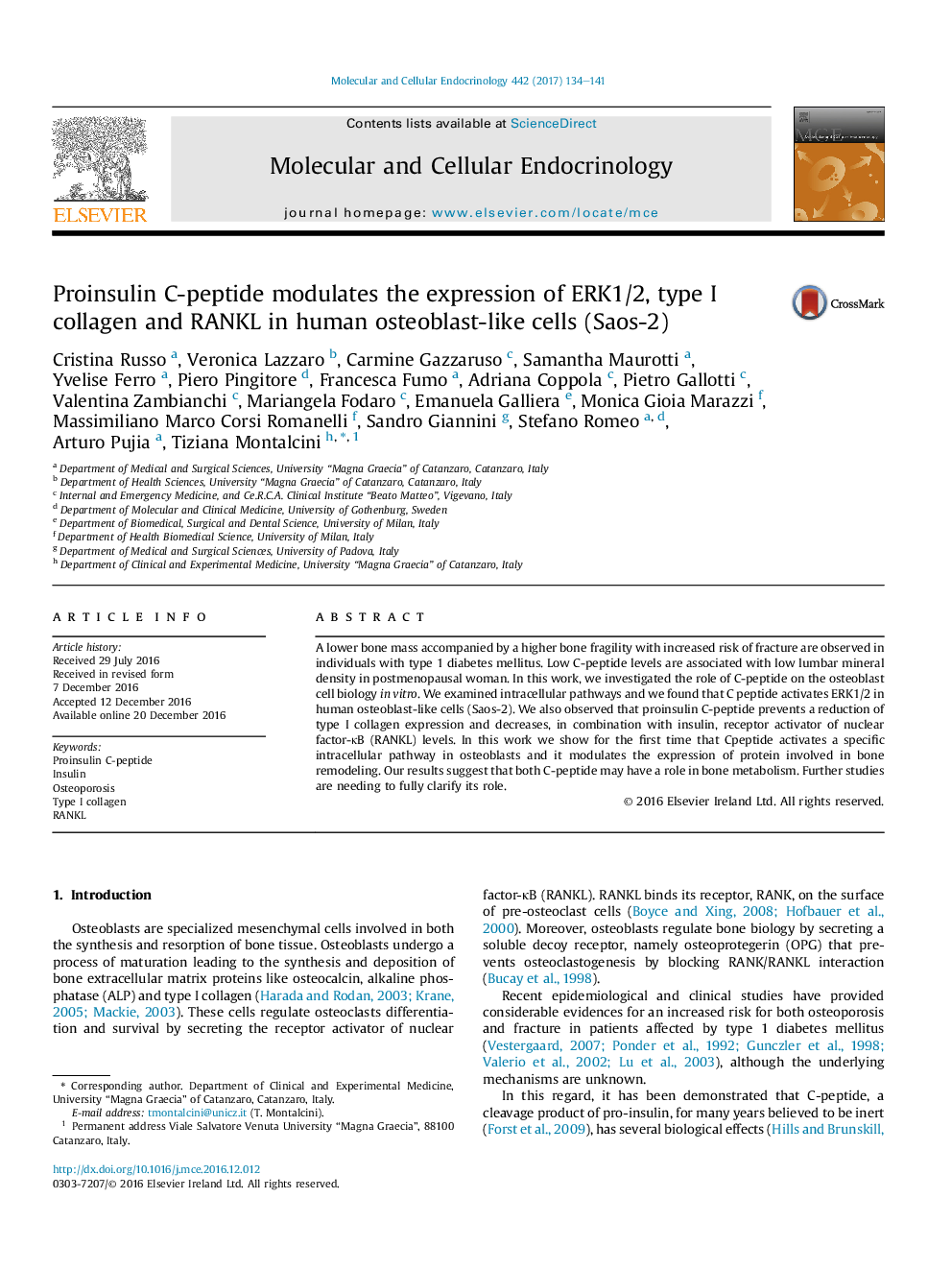| Article ID | Journal | Published Year | Pages | File Type |
|---|---|---|---|---|
| 5534088 | Molecular and Cellular Endocrinology | 2017 | 8 Pages |
â¢In this study C-peptide activates the ERK1/2 signaling in Saos-2.â¢C-peptide prevents the reduction of type I collagen mRNA and protein.â¢Pro-insulin C-peptide decreases RANKL mRNA and protein levels.â¢C-peptide might contribute to the reparative mechanisms of bone tissue.
A lower bone mass accompanied by a higher bone fragility with increased risk of fracture are observed in individuals with type 1 diabetes mellitus. Low C-peptide levels are associated with low lumbar mineral density in postmenopausal woman. In this work, we investigated the role of C-peptide on the osteoblast cell biology in vitro. We examined intracellular pathways and we found that C peptide activates ERK1/2 in human osteoblast-like cells (Saos-2). We also observed that proinsulin C-peptide prevents a reduction of type I collagen expression and decreases, in combination with insulin, receptor activator of nuclear factor-κB (RANKL) levels. In this work we show for the first time that Cpeptide activates a specific intracellular pathway in osteoblasts and it modulates the expression of protein involved in bone remodeling. Our results suggest that both C-peptide may have a role in bone metabolism. Further studies are needing to fully clarify its role.
